Danish artist Jette Clover has led a diverse professional life which culminated in her becoming a full-time artist in 1998. After working at a daily newspaper in her hometown of Copenhagen, Jette moved to Los Angeles where she owned an art gallery. She would also go on to run a Jazz Club in the Netherlands before eventually settling in Antwerp, Belgium in 2005.
Jette has curated exhibitions at the Dutch Textile Museum for over 10 years and started the very first European Art Quilts exhibition in 1997.
In our interview with Jette, she tells us about the influence of her background in journalism, her love for experimentation and why she makes art and not quilts.
A means of relaxation
TextileArtist.org: What or who were your early influences and how has your life/upbringing influenced your work?
Jette Clover: When I was a journalist at a daily newspaper in Copenhagen I was actually using textile work as a means of relaxation from a very hectic life – working with my hands instead of my head. As a child I had learnt knitting and sewing from my mother and grandmother and I associated textile work with relaxing social activities. Later when I lived in California in the 1970s, I saw several exhibits of ‘new fiber art’, and I was absolutely fascinated by the monumental work of artists like Magdalena Abokanowizc, Jagoda Buic, Sheila Hicks and Lenore Tawney, and I started to spin, dye yarn and weave, both on a loom and off-loom.
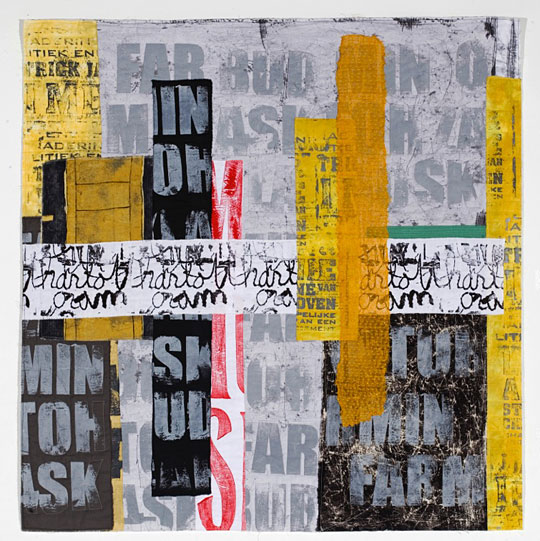
What was your route to becoming an artist? (Formal training or another pathway?)
I wanted to go to art school, but I also wanted to know what other people had done, so I signed up for art history. At my university the art history department was in the same building as the art department, and we were encouraged to take studio classes in painting, sculpture and print making, which made me more and more interested in surface design and fabric. I think, I am always trying to be balancing between being a maker and being a historian. The making, the working with my hands, has always been very important to me, but it has always been ‘coupled with a head activity’ – teaching art history classes, later curating museum exhibitions and now teaching workshops and masters classes.
After about 15 years in America we moved back to Europe, and I started working at the Dutch Textile Museum. However, after more than ten years as curator of exhibitions I made the decision to become an artist. I had just organised the very first European Art Quilt exhibition in 1997 and realised how much I was missing the making of art, and the beginning of a European art quilt community gave me the extra push I needed to switch from making art part time to devote all my time pursuing the making of art quilts.
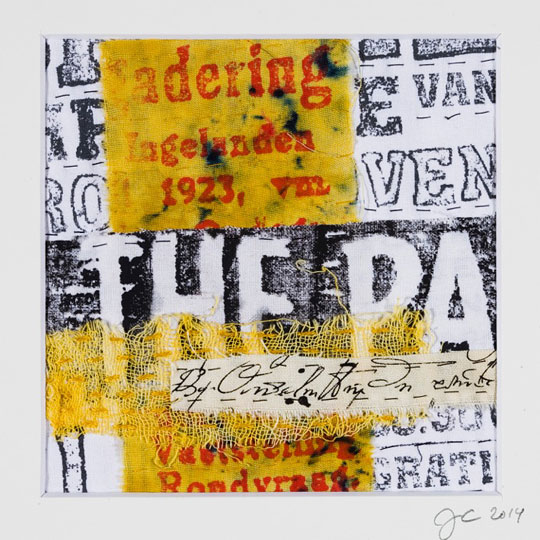

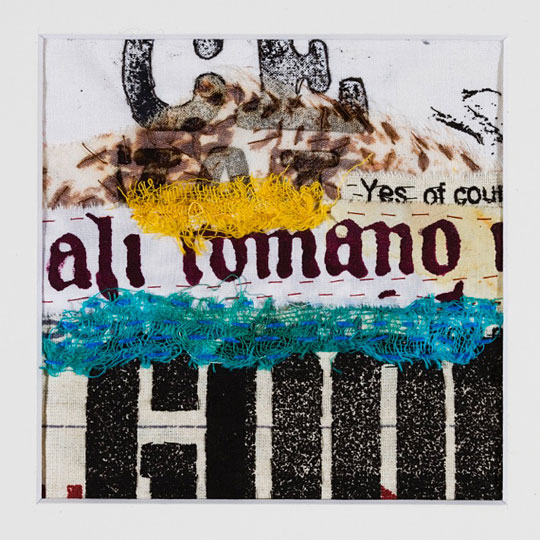
Unpredictable results
How would you describe your work and where do you think it fits within the sphere of contemporary art?
I sometimes refer to my work as art quilts and sometimes as mixed media. It is difficult to find the exact description. It depends on the situation. I definitely feel an affinity with the quilt tradition and women’s work, but at the same time my intention is to make art and not quilts…. I work with both textile and paper and combine it with with many different techniques: dyeing, painting, printing, screening, rusting, discharge, photo transfer, etc. I love to experiment, but I always seem to come back to screen printing. I am especially interested in discharge dyeing and rusting fabric because of the unpredictable results. I like working with processes that I can’t really control.
I usually make 2-dimensional pieces. They are wall pieces, and I don’t see any difference in having a painting or an art quilt hanging on the wall. It is not the material that makes it art.
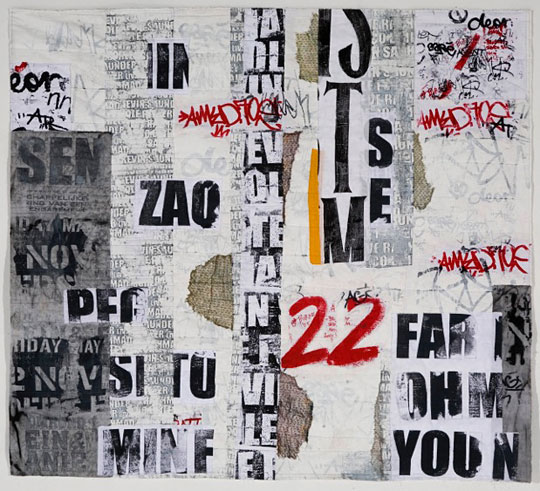
Tell us a bit about your process and what environment you like to work in?
Almost all of my work refers to writing – to big letterforms in the street as well as printed book pages, intimate handwritten letters and newspapers in languages I don’t understand. Because of my journalist background I have always been interested in writing, and language and communication continue to be my main source of inspiration, both the graphic forms and the ability of those forms to convey meaning.
I love living in the city and exploring all the chips, cracks and scratches from centuries of everyday life. I enjoy the accidental juxtaposition and layering of torn posters, faded advertisements and sprawling graffiti in the urban landscape. These collages of partially eroded words and half-hidden messages are a constant source of inspiration to me and makes me feel part of a social communication.
I work very much in a cycle of construction-deconstruction-reconstruction. For my White Wall series I am printing letters and text in black and then ‘erasing’ it again by over-painting many times with white acrylic paint and sanding certain areas to reveal what is beneath the surface, thereby simulating the effects of time and the elements on the distressed walls.
I am always working in series, and I always have at least one series of small pieces and one series of big pieces going. Working small is very freeing – it is definitely not as intimidating to work on a piece 20 x 20 cm as a 2 x 2 meter piece.
My longest running series is my small portrait collages based on postage stamps of famous people. I started these Small Notes in 2001, and I’ll keep making them as long as I find stamps of people that speak to me. I just finished # 312.
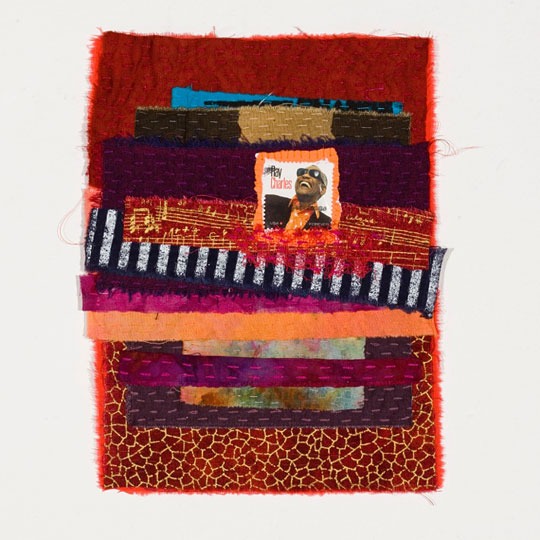
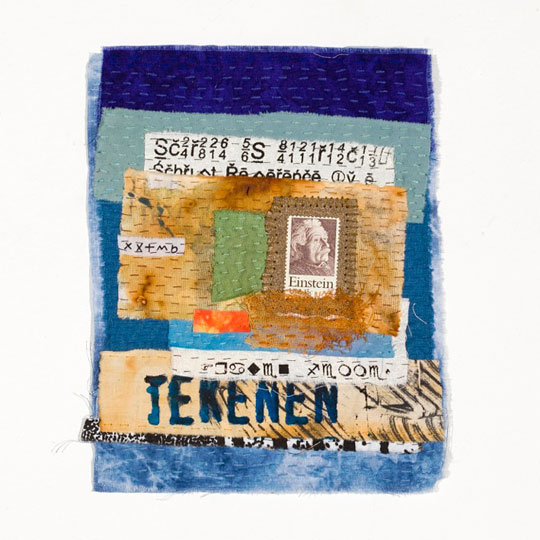
Collected memories
Do you use a sketchbook?
I never make prepatory sketches. I have a general idea in mind and collect a pile of possible materials and start pinning pieces on my design wall until it feels right. I respond directly to the materials. If I had to plan out an idea first, I wouldn’t be interested in making the piece. I am a hands-on person, and I like the handling of materials and making spontaneous decisions about what works. The collage medium is ideal for me.
For several years I have been starting my day by making a small paper collage, spending about 1/2 hour with myself and my materials and training my hand-eye co-ordination. I feel this daily routine has increased my confidence in making compositions based on my intuition. And this way of working, following my intuition, I then take with me when working on bigger pieces.
However, I have a stack of notebooks with a collection of images and writing. I try to organise them by subject matter, eg. street signs, graffiti, textures, collage, individual colours, etc. but with no luck. Too much overlapping. These books are my collected memories. They are really me ‘talking to myself’ about my thoughts, ideas and inspirations, and I can spend hours or a whole day just looking through them.
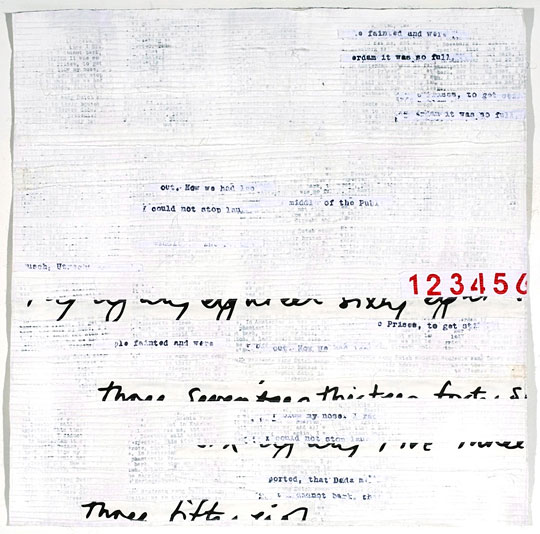
What currently inspires you and which other artists do you admire and why?
Having studied art history there are so many artists through the centuries that I admire, but currently I am very inspired by the 19th century Danish painter Vilhelm Hammershøi. He paints interior settings in very subtle colors of white, grey, black and brown. His paintings evoke a sense of contemplation and quiet serenity. Very little happens in his paintings, but you feel a great deal when you are in front of them. A sense of closeness and intimacy and the magic effect of light keeping the world at large at a distance.
I am always striving to express ‘less is more’. It is not always evident in my work – but I keep striving – and Hammershøis paintings help me remember.
Tell us about a piece of work you have fond memories of and why?
I like to use discarded ‘stuff’, things that no longer are considered useful and give it a new life. I use found objects, both as material and as tools, and often the found fabric or paper also become the subject matter: fragments of the past that are being rescued and re-used in a new context.
Making art to me is having a dialogue with materials, and found materials with holes and stains make me feel invited to participate in an exchange of markmaking. We all know how intimidating it can be to start on a clean white piece of paper or fabric, and how liberating it can be, if you have an accident and spill something on it. You no longer have to be perfect. Just a little spot – and you have something to relate to, something to respond to.
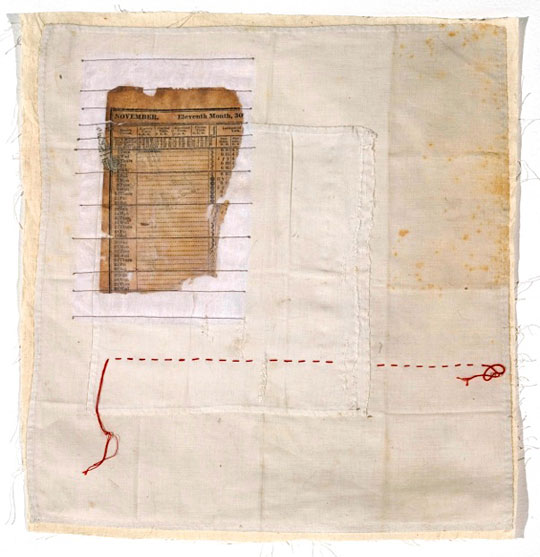
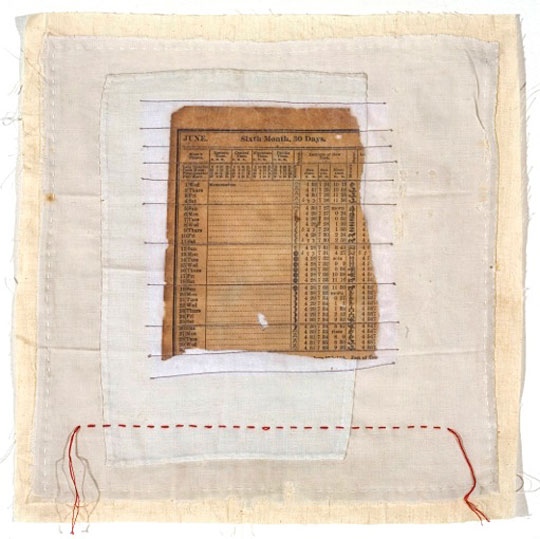
Less is more
In Marolles Rags I think I have come closest to give expression to this dialogue and to the idea of ‘less is more’. This series of 12 pieces is based on ‘treasures’ that I found at the big flea market in Brussels. I felt a deep connection with these ordinary scraps of paper and fabric and wanted to react to the texture, the colour and the embedded meaning in the found objects with layering and stitching.
What advice would you give to an aspiring textile artist?
Work. Work. Work. Try to do some work every day, even if you only can spare ½ hour. I believe the regularity is more important than the amount of time. And look for inspiration outside your medium. Look at photographs, ceramics, glas, paintings and sculptures.
Can you recommend 3 or 4 books for textile artists?
[easyazon_link asin=”1600591361″ locale=”UK” new_window=”default” nofollow=”default” tag=”wwwtextileart-21″ add_to_cart=”default” cloaking=”default” localization=”default” popups=”default”]Design by Steven Aimone .
[easyazon_link asin=”0743235274″ locale=”UK” new_window=”default” nofollow=”default” tag=”wwwtextileart-21″ add_to_cart=”default” cloaking=”default” localization=”default” popups=”default”]The Creative Habit by Twyla Tharp .
[easyazon_link asin=”1587170302″ locale=”UK” new_window=”default” nofollow=”default” tag=”wwwtextileart-21″ add_to_cart=”default” cloaking=”default” localization=”default” popups=”default”]Picture This. How Pictures Work by Molly Bang .
[easyazon_link asin=”0952626713″ locale=”UK” new_window=”default” nofollow=”default” tag=”wwwtextileart-21″ add_to_cart=”default” cloaking=”default” localization=”default” popups=”default”]The series Art Textiles of the World from Telos Publishing .
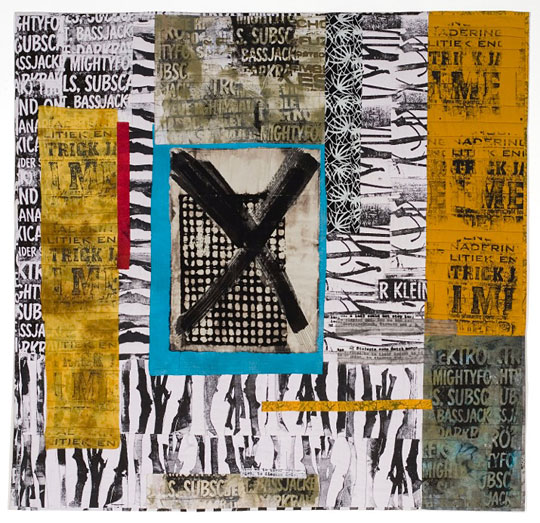
What other resources do you use? Blogs, websites, magazines etc.
I occasionally look at a blog or a website, but I prefer books over the computer, and I go to museums a lot.
What piece of equipment or tool could you not live without?
Besides my sewing machine probably my thermofax machine.
Do you give talks or run workshops or classes? If so where can readers find information about these?
Yes I teach workshops and masters classes in surface design and composition. I love the interaction with students, but I try to keep a balance between time spent teaching and time spent in the studio, so about 6-8 times a year. I don’t teach in my studio, however, and I don’t organise the workshops myself. I get asked by groups or organisations. I did a lot of organising in my previous life as museum person, and now I like to concentrate on the teaching part and leave the organising to somebody else.
Where can readers see your work this year?
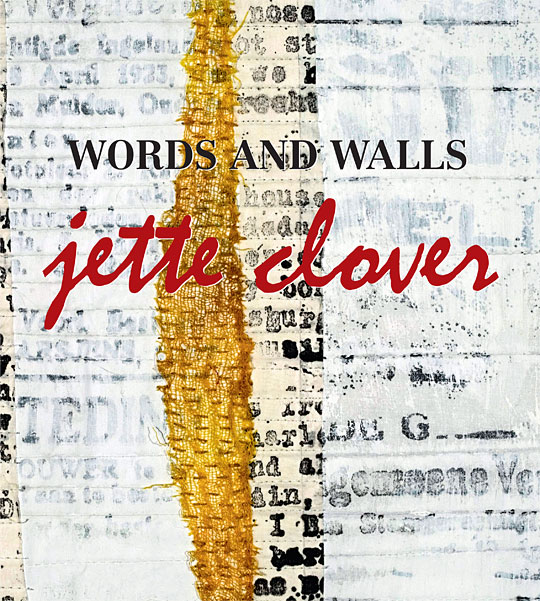
I had a very busy year last year with three solo exhibitions. I also published a book, Words and Walls, about my quilts and collages, so I wanted to take it easier this year and have time for experimenting and for reflection. And 2015 is going to be very busy with a solo exhibition in a gallery and a 2-person exhibition, and Quilt Art (the European group that I have been a member of since since 2000) is celebrating our 30th anniversary and are planning 2 exhibitions and a book.
But I have work in the European Art Quilts VIII exhibition, which will open at the Festival of Quilts, and I will have two pieces at the Carrefour in Alsace in the special anniversary exhibition for artists that have had their own exhibit there in the past.
For more information on Jette Clover please visit her website: www.jetteclover.com
If you’ve enjoyed this interview with Jette, let us know by leaving a comment below.

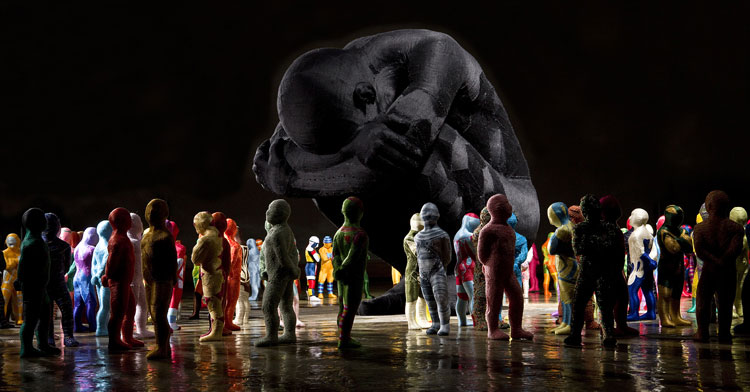
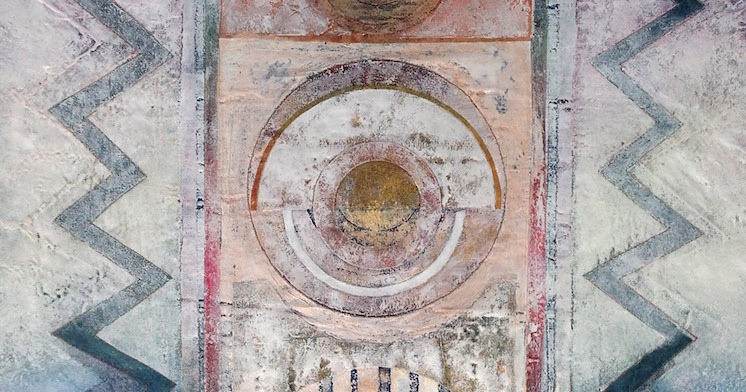
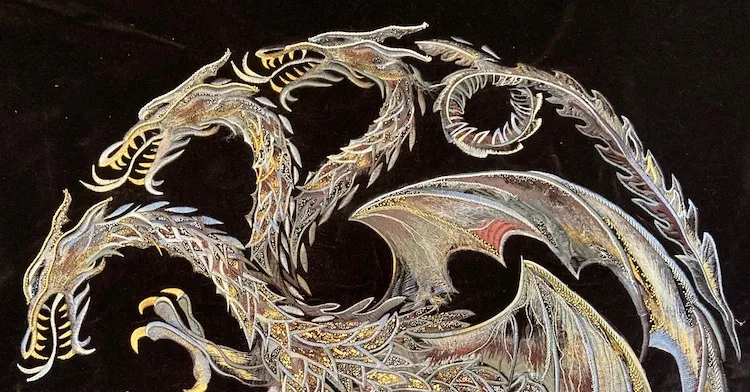
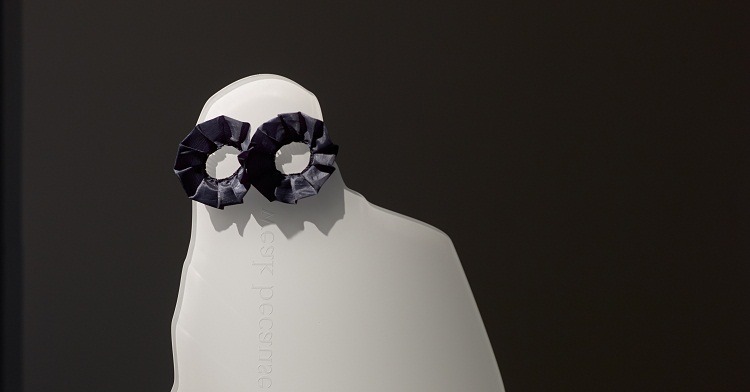
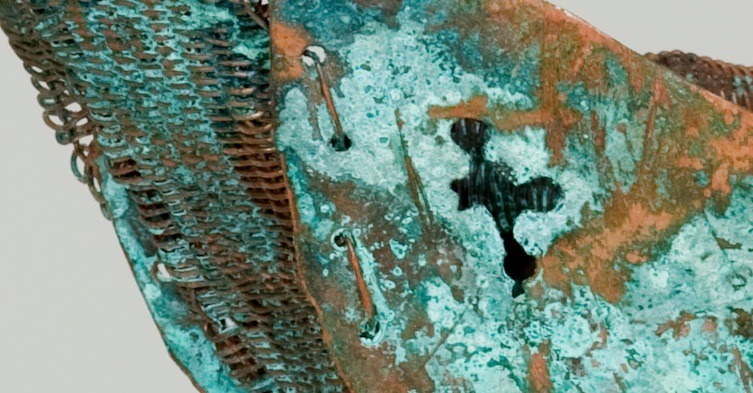
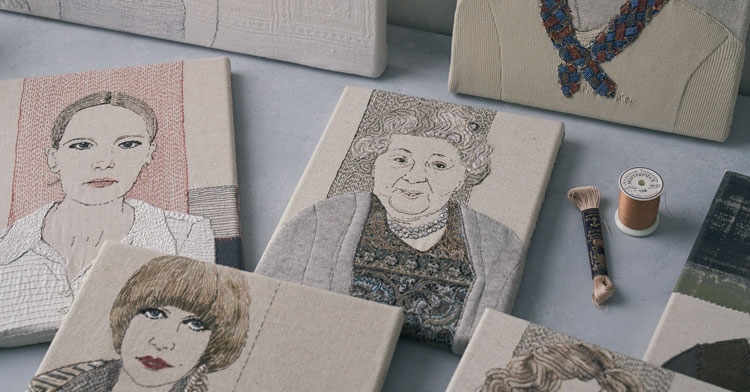
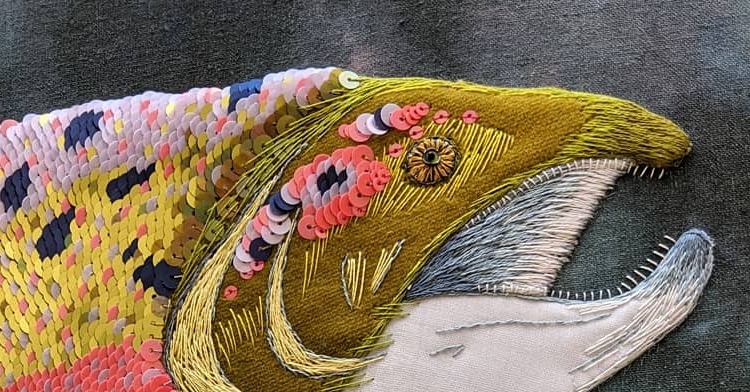
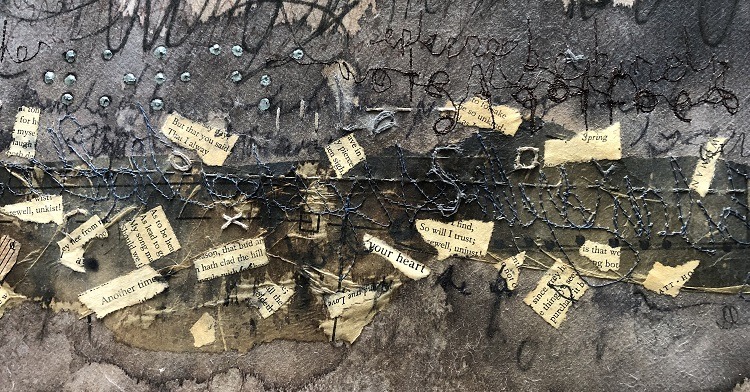
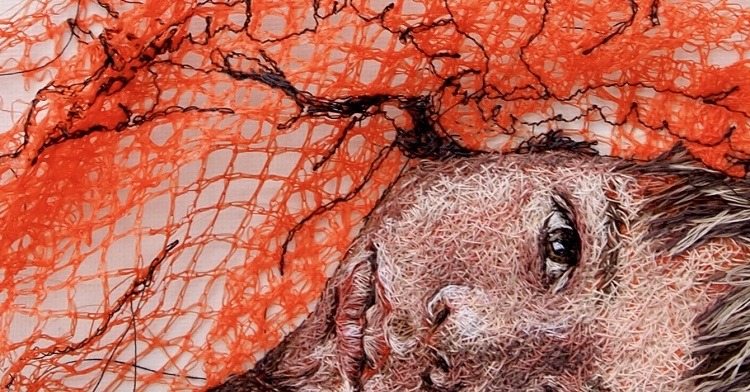
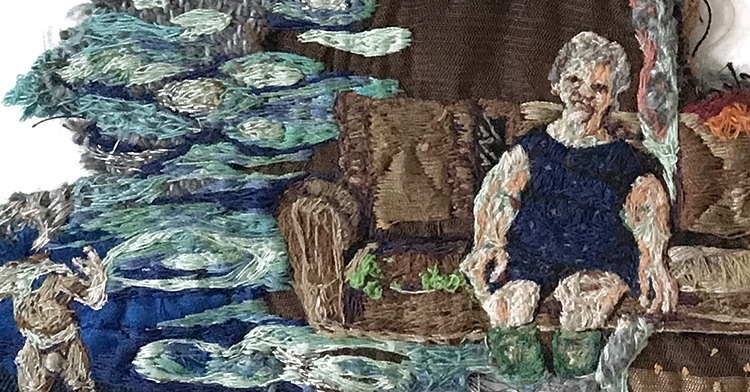
4 comments
Margaret
I am lucky enough to be booked into a 5 day workshop with Jetta at Ballarat in Australia – therefore I am devouring any information I am able to find re Jetta.
Thank you for this interview.
Tracy Fraser
Wonderful and inspiring artist, love text in art and love her work. Thank you for this article
Anneke Herrold
Loved this interview. An artist after my own heart!
Anke Maks
Recognized much of your sources of inspiration and motivation.
Admire and know your work since many years and enjoyed this intervieuw.
Thank you !!